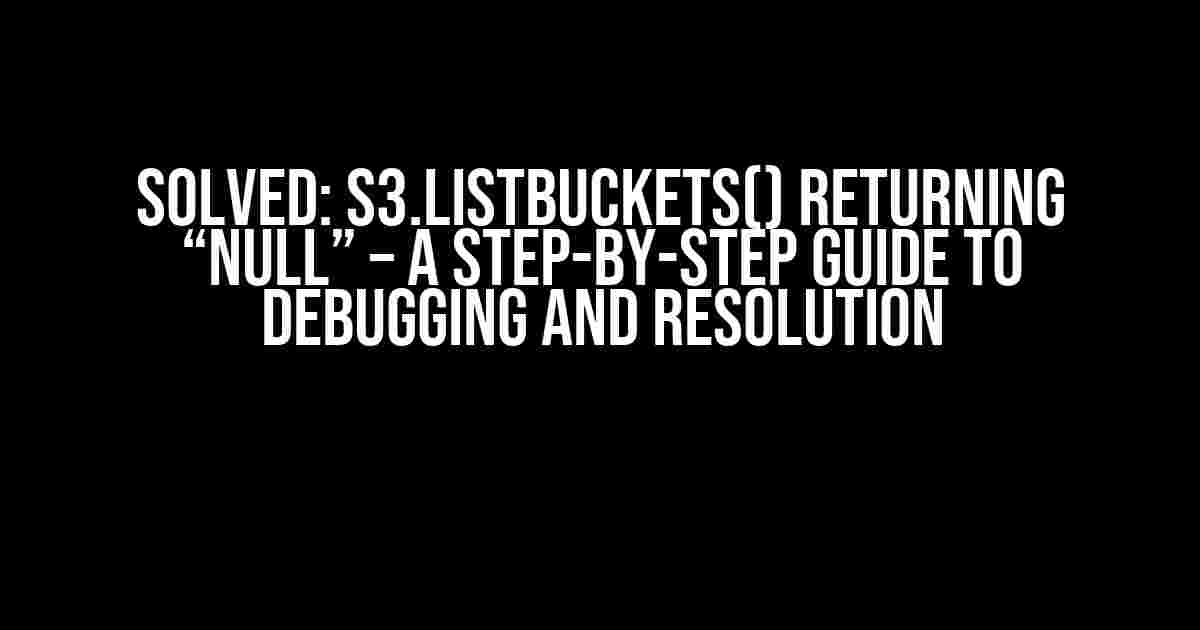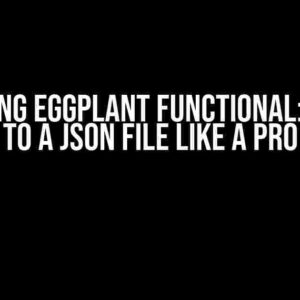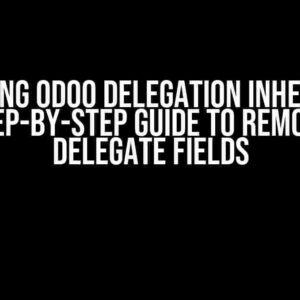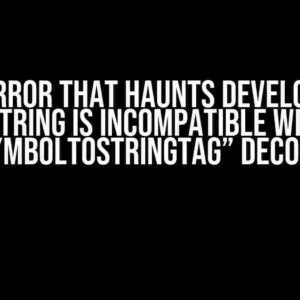Are you stuck in the Amazon S3 vortex, where your code keeps returning “null” when trying to list buckets using the s3.listBuckets() method? Fear not, dear developer, for we’ve got your back! In this comprehensive guide, we’ll dive into the possible causes, debugging techniques, and solutions to this frustrating issue.
Understanding the s3.listBuckets() Method
The s3.listBuckets() method is a part of the AWS SDK, used to retrieve a list of all buckets owned by the authenticated AWS account. It’s a straightforward method, but sometimes, it can be a bit finicky. Before we dive into the troubleshooting process, let’s quickly review how to use this method correctly:
const AWS = require('aws-sdk');
const s3 = new AWS.S3({
region: 'your-region',
accessKeyId: 'YOUR_ACCESS_KEY',
secretAccessKey: 'YOUR_SECRET_KEY'
});
s3.listBuckets(function(err, data) {
if (err) {
console.log(err);
} else {
console.log(data);
}
});Common Causes of s3.listBuckets() Returning “null”
Now that we’ve covered the basics, let’s explore the possible reasons why s3.listBuckets() might be returning “null”. We’ll break it down into three main categories:
Authentication Issues
- Invalid or Missing Credentials: Double-check that your AWS access key ID and secret access key are correct and properly formatted. Make sure you’re using the correct IAM user or role credentials.
- Expired or Invalid Tokens: If you’re using temporary security tokens, ensure they haven’t expired. You can try renewing the tokens or using long-lived credentials instead.
Configuration and Permissions
- Bucket Permissions: Verify that the IAM user or role has the necessary permissions to list buckets. You can check the IAM policy or bucket policy to ensure the correct permissions are set.
- Bucket Region: Make sure the region specified in your S3 client matches the region where the buckets are located.
Networking and Connectivity
- Network Connection Issues: Check your internet connection and ensure it’s stable. Try pinging the AWS S3 endpoint to verify connectivity.
- Firewall or Proxy Restrictions: If you’re behind a firewall or proxy, it might be blocking the request to S3. Check your network settings and configure the necessary exceptions.
Debugging Techniques
Now that we’ve covered the possible causes, let’s explore some debugging techniques to help you identify the root cause of the issue:
Enabling AWS SDK Debugging
You can enable debugging for the AWS SDK by setting the `AWS_DEBUG` environment variable to `true`:
process.env.AWS_DEBUG = true;This will provide more detailed error messages and insights into the SDK’s internal workings.
Logging and Error Handling
Implement proper logging and error handling mechanisms to catch and display errors more effectively:
s3.listBuckets(function(err, data) {
if (err) {
console.log('Error:', err);
console.log('Error Stack:', err.stack);
} else {
console.log(data);
}
});By logging the error and its stack trace, you can gather more information about the issue.
S3 Client Configuration
Verify that your S3 client is properly configured by logging its settings:
console.log(s3.config.credentials);
console.log(s3.config.region);
console.log(s3.config.endpoint);This will help you identify any misconfigurations or issues with your client setup.
Resolution and Workarounds
Based on your debugging findings, you can try the following resolutions and workarounds:
Authentication Issues
- Rotate Credentials: If you suspect expired or invalid credentials, try rotating them or using a different set of credentials.
- Use AWS CLI: If you’re using the AWS SDK programmatically, try using the AWS CLI to list buckets and verify that the credentials are correct.
Configuration and Permissions
- Verify IAM Policy: Double-check the IAM policy associated with the user or role and ensure it has the necessary permissions for listing buckets.
- Update Bucket Policy: If you suspect issues with the bucket policy, update it to include the necessary permissions for the IAM user or role.
Networking and Connectivity
- Check Network Connectivity: Verify that your network connection is stable and working correctly.
- Use a Proxy or VPN: If you’re behind a firewall or proxy, try using a proxy or VPN to access the S3 endpoint.
Conclusion
In conclusion, the s3.listBuckets() method returning “null” can be a frustrating issue, but by following this comprehensive guide, you should be able to identify and resolve the root cause. Remember to:
- Verify authentication and credentials.
- Check configuration and permissions.
- Debug and log errors effectively.
- Try workarounds and resolutions based on your findings.
By being methodical and thorough in your approach, you’ll be able to overcome this obstacle and successfully list your S3 buckets.
| Common Causes | Debugging Techniques | Resolutions and Workarounds |
|---|---|---|
| Authentication Issues | Enable AWS SDK debugging, logging, and error handling | Rotate credentials, use AWS CLI, or verify IAM policy |
| Configuration and Permissions | Log S3 client configuration, verify IAM policy, and check bucket policy | Update IAM policy, update bucket policy, or verify region |
| Networking and Connectivity | Check network connectivity, use a proxy or VPN, and log errors | Verify network connection, use a proxy or VPN, or check firewall rules |
Remember, patience and persistence are key when troubleshooting issues with the s3.listBuckets() method. Take your time, follow the steps outlined in this guide, and you’ll be listing buckets like a pro in no time!
Frequently Asked Question
Got stuck with s3.listBuckets() returning “null”? Don’t worry, we’ve got you covered!
Why is s3.listBuckets() returning “null” when I’m sure I have permissions to access my buckets?
This might happen if you’re using a credentials file or environment variables to set your AWS credentials, but they’re not being picked up correctly. Double-check that your credentials are set up properly and try again!
I’m using the AWS SDK for a specific language, but s3.listBuckets() still returns “null”. What’s going on?
This could be due to a configuration issue with the SDK. Make sure you’re using the correct region and credentials, and that you’ve initialized the S3 client correctly. Check the SDK documentation for your language to ensure you’re doing everything right!
I’ve checked my credentials and SDK configuration, but s3.listBuckets() still returns “null”. What’s next?
Time to dig deeper! Check the AWS SDK logs to see if there are any error messages that can give you a hint about what’s going wrong. You can also try using the AWS CLI to list your buckets and see if that works. If it does, then the issue is likely with your code.
I’m using a role to access my buckets, but s3.listBuckets() returns “null”. Is there a problem with my role?
Possibly! Make sure the role has the necessary permissions to list buckets. Check your IAM policy to ensure it includes the “s3:ListBuckets” permission. If it does, try assuming the role and checking the credentials again.
I’ve tried everything, but s3.listBuckets() still returns “null”. What should I do now?
Don’t give up! Reach out to AWS support or post a question on a relevant forum (like the AWS forums or Stack Overflow) with all the details of your issue. Someone will be able to help you troubleshoot the problem and get you unstuck!







